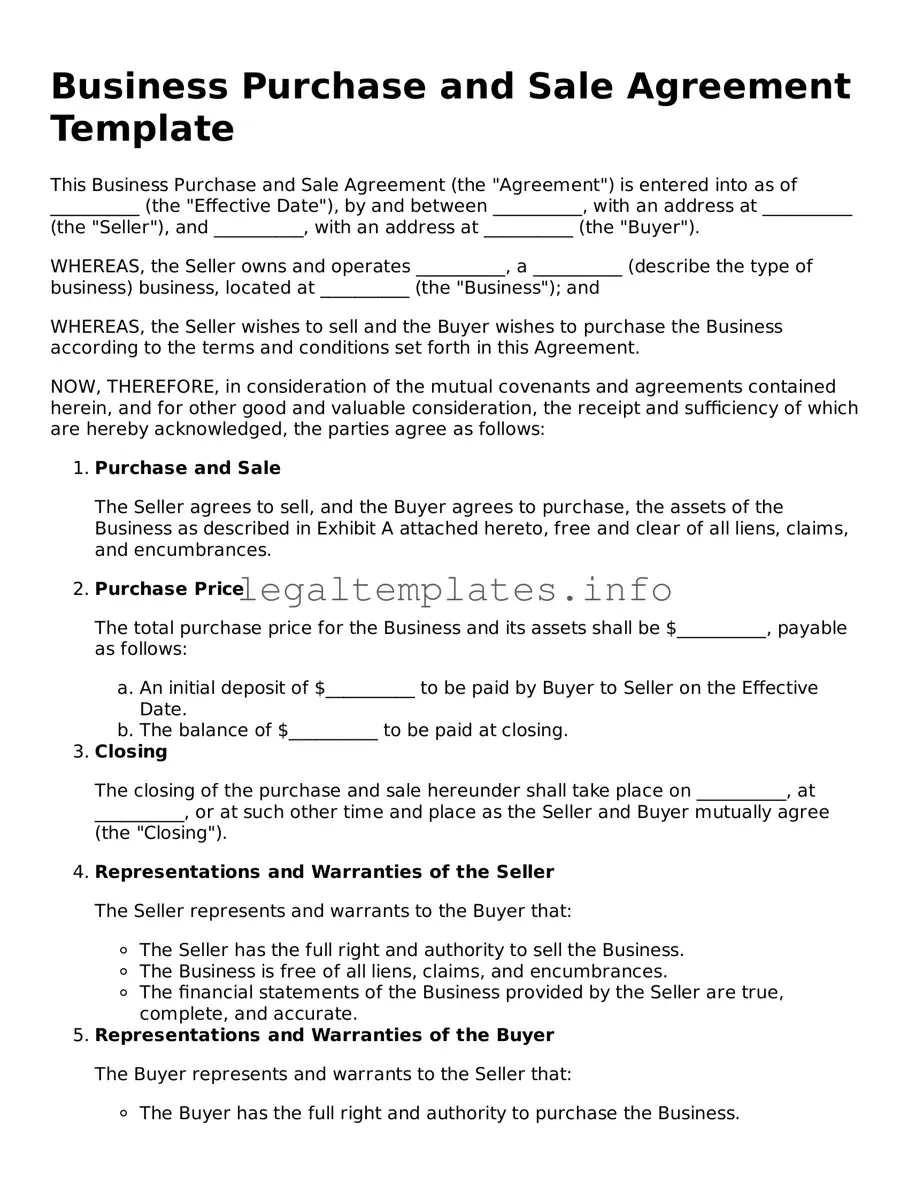Business Purchase and Sale Agreement Template
This Business Purchase and Sale Agreement (the "Agreement") is entered into as of __________ (the "Effective Date"), by and between __________, with an address at __________ (the "Seller"), and __________, with an address at __________ (the "Buyer").
WHEREAS, the Seller owns and operates __________, a __________ (describe the type of business) business, located at __________ (the "Business"); and
WHEREAS, the Seller wishes to sell and the Buyer wishes to purchase the Business according to the terms and conditions set forth in this Agreement.
NOW, THEREFORE, in consideration of the mutual covenants and agreements contained herein, and for other good and valuable consideration, the receipt and sufficiency of which are hereby acknowledged, the parties agree as follows:
- Purchase and Sale
The Seller agrees to sell, and the Buyer agrees to purchase, the assets of the Business as described in Exhibit A attached hereto, free and clear of all liens, claims, and encumbrances.
- Purchase Price
The total purchase price for the Business and its assets shall be $__________, payable as follows:
- An initial deposit of $__________ to be paid by Buyer to Seller on the Effective Date.
- The balance of $__________ to be paid at closing.
- Closing
The closing of the purchase and sale hereunder shall take place on __________, at __________, or at such other time and place as the Seller and Buyer mutually agree (the "Closing").
- Representations and Warranties of the Seller
The Seller represents and warrants to the Buyer that:
- The Seller has the full right and authority to sell the Business.
- The Business is free of all liens, claims, and encumbrances.
- The financial statements of the Business provided by the Seller are true, complete, and accurate.
- Representations and Warranties of the Buyer
The Buyer represents and warrants to the Seller that:
- The Buyer has the full right and authority to purchase the Business.
- The Buyer has sufficient funds to complete the purchase of the Business.
- Confidentiality
Both parties agree to keep the terms of this Agreement, and any information obtained during the due diligence process, confidential.
- Governing Law
This Agreement shall be governed by and construed in accordance with the laws of the State of __________, without regard to its conflicts of law principles.
- Entire Agreement
This Agreement constitutes the entire agreement between the parties pertaining to the subject matter hereof and supersedes all prior agreements, understandings, negotiations, and discussions, whether oral or written, of the parties.
- Amendments
No amendment, modification, or supplement of any provisions of this Agreement shall be valid unless in writing and signed by all parties.
- Notices
All notices, requests, claims, demands, and other communications hereunder shall be in writing and shall be given (and deemed to have been duly given upon receipt) by delivery in person, by email, or by registered or certified mail (postage prepaid, return receipt requested) to the respective parties at the address set forth on the first page of this Agreement.
IN WITNESS WHEREOF, the parties hereto have executed this Agreement as of the first date above written.
SELLER:
_________________________ __________
Signature Date
BUYER:
_________________________ __________
Signature Date
